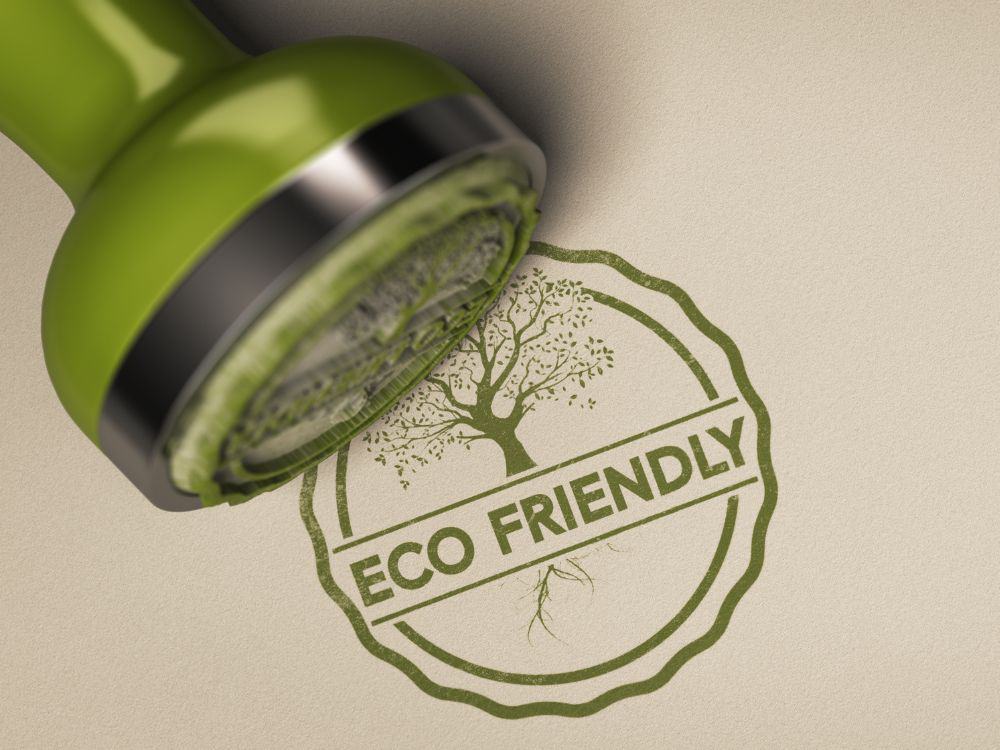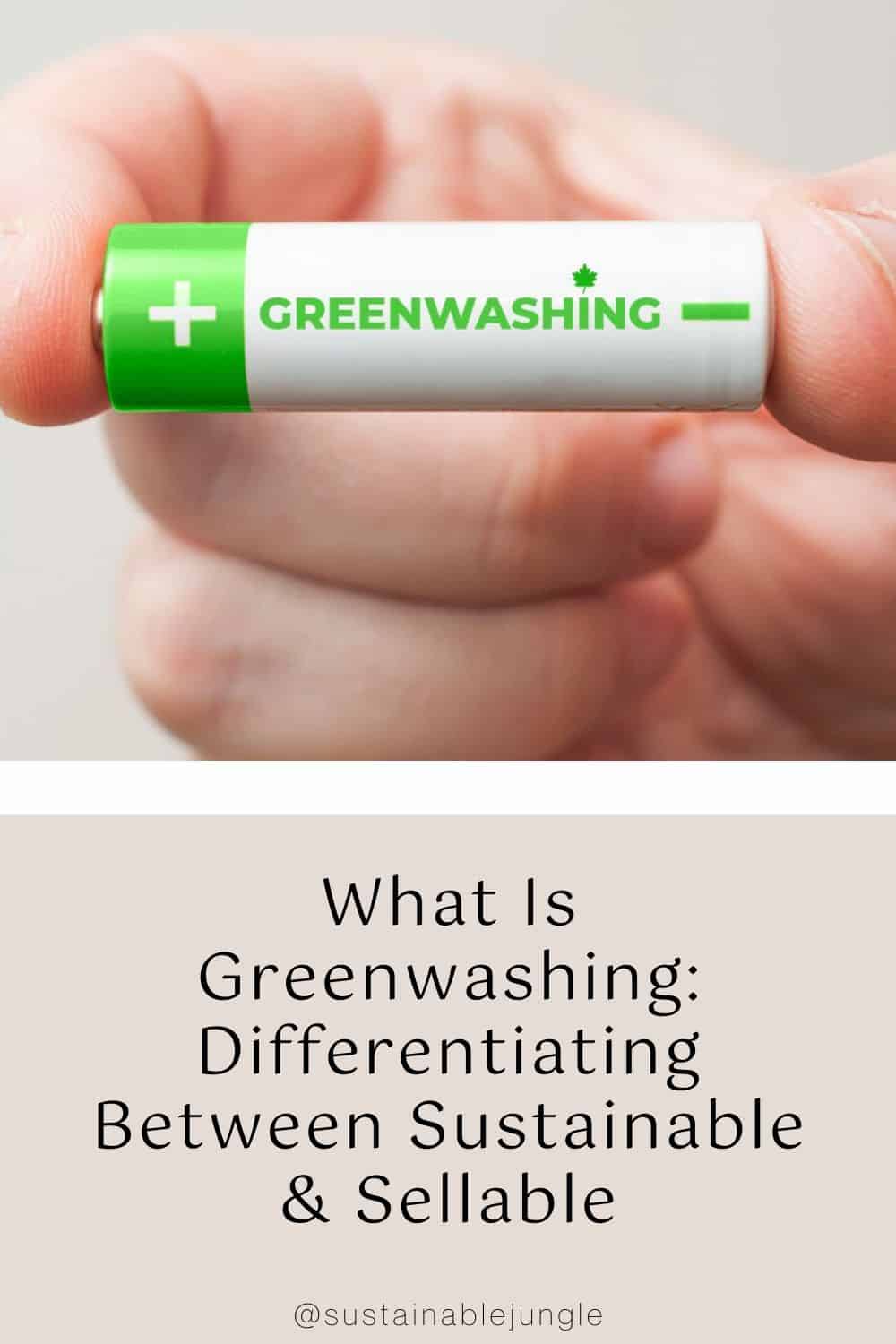
What Is Greenwashing: Differentiating Between Sustainable & Sellable
Rising consumer demand for eco-friendly products, green practices, and socially responsible brands signals a fantastic shift toward conscious consumerism.
The downside?
Increased greenwashing. If you’re not sure what the term means, you’re in good company. 78% of Americans aren’t sure either. As a result, more and more people are asking, what is greenwashing? The good news, you don’t need a masters in sustainability to understand it (or spot it).
What Is Greenwashing And Why Is It A Problem?
The word greenwashing is a play on “whitewashing,” a term used to indicate the intentional use of false information or marketing tactics to hide errors, crimes, or scandals.
What is greenwashing in simple words?
Also referred to as “green sheen,” the SJ greenwashing definition can be boiled down to: dishonest or deceitful marketing about a company or product’s environmental impact.
Greenwashed environmental marketing claims are a problem because they capitalize on a growing demand for sustainable practices and products.
Worse, greenwashing companies often spend more money on making consumers think they’re offering eco-friendly products than actually just making them eco-friendly.
So what can we do?
We’ll answer that, and more, below. Or watch our video if you just want the highlights.
1. Definition of Greenwashing

Greenwashing is the process of using misleading or false information about a company’s operations and/or products to deceive customers and members of the public about their environmental impact.
To fully define greenwashing, you have to consider both positive and negative impacts on the planet. Usually, the balance tips to the former to cover up the latter.
A brand may tout its cereal as antioxidant-rich to detract from the fact that it contains genetically modified soy and corn ingredients.
They may choose a brand name like “Green Works” to cash in on a demand for sustainable goods—yet still use questionable ingredients and plastic packaging.
Sure, it’s great to buy body wash from a company that “runs on solar power”. But when the environmental claim isn’t backed by the percentage of renewable energy used and their products contain several petroleum-derived ingredients, we’ve been greenwashed.
Greenwashing in marketing vs. green marketing
Green marketing, on the other hand, is when an environmental marketing claim is actually substantiated.
With green marketing—also referred to as environmental or ecological marketing or green advertising—a responsible company honestly and transparently shares details that back its green claims.
This is a good thing. Green marketing helps us find green products with REAL environmental benefits, so that we can support brands—in everything from sustainable skincare to sustainable food brands—that truly prioritize environmental responsibility.
2. History Through A Green-Tinted Lens

The market is booming with greenwashed products, but it’s not exactly a new thing.
Greenwashing has been around since the 1960s, driven by the nuclear power industry’s need to stay competitive during the anti-nuclear movement.
The term itself was coined later in 1986, by Jay Westerveld in response to the hotel industry, which encouraged customers to reuse towels “to save the environment” (cough, cough, help the hotel save on laundry costs—not that we disagree that you should try to reuse hotel towels!).
Around the same time, Chevron was running its environmentally conscious “People Do” ad campaign. While it aired, Chevron was violating the Clean Air Act and being sued by the EPA and Sierra Club over illegally dumping pollutants into Santa Monica Bay.
Misleading environmental claims have become a regular corporate practice in the decades since and the list of companies greenwashing (some caught in the act and some not) has grown long indeed.
Why?
Statistically, green sells.
In 2022, 95% of surveyed consumers ranked “sustainability” as an important consideration. 84% had purchased a sustainable product in the past six months—up from 67% the previous year.
Even with the impacts of inflation, green purchasing intentions are up. Consumers are willing to pay more for green products, too.
By superficially appealing to green demands, greenwashing brands retain the most environmentally conscious consumers (and their $$) without actually minimizing their environmentally damaging practices.
3. Why Is Greenwashing A Problem?

Corporate greenwashing is the practice of misleading consumers who are attempting to “vote with their dollar” to combat climate change and damaging environmental practices.
If you’ve reached for a carton of “farm fresh” eggs, tried shampoo offering a “truly organic experience,” or opted for one sponge over another based on the recycled-looking brown and green packaging, you’ve likely been duped by greenwashing.
Green is “in” and environmentally friendly is trendy.
Unfortunately, when consumers think they’re making a pro-environmental consumer choice, they could inadvertently be contributing to harmful practices instead.
Environmental problems associated with greenwashing
False claims may lead consumers to unintentionally contribute to higher levels of greenhouse gas emissions.
They may be funding business operations associated with heavy chemical use, discharge of polluted wastewater, high levels of waste, or biodiversity loss.
A Malaysian palm oil company, for example, advertised itself as providing a “home to hundreds of species of flora and fauna”.
Unfortunately, with a boost in sales, they were directly contributing to species extinction, pollution, and habitat loss (and had to remove the ad as a result).
Social problems associated with greenwashing
While they may make some short-term gains, companies’ greenwashing efforts can also backfire and damage their business.
Consumer trust is declining across the globe, with only 38% of Americans believing corporate environmental claims “most” or “all of the time” (a percentage that has decreased in recent years).
Dishonesty isn’t a good look, and it can take a toll on a business’s bottom line—which has carryover impacts on their employees and the economy as a whole.
CSR greenwashing
Corporate social responsibility (CSR) refers to the actions a company takes to be socially and environmentally accountable to itself, its stakeholders, and the public. Prioritizing CSR means that a company’s practices are oriented towards environmental benefits.
The world needs this.
A 2021 study claims, “Companies’ CSR practices can play a key role in promoting sustainable development by reducing carbon emissions.”
But the reverse is also true. When corporate environmental performance is greenwashed, it can counteract much-needed sustainability improvements.
Not only that, but supporting a company engaged in greenwashing takes a slice of the pie from sustainable brands actually trying to do the right thing through their environmentally friendly CSR efforts.
4. What Are Three Types Of Greenwashing?

While greenwashing marketing can take on many forms, there are three common types to look for:
- Misleading labels and language: Unsubstantiated claims like “eco-friendly,” “green,” or “non-toxic” that aren’t regulated and could mean whatever the company wants them to mean.
- Environmental imagery: Green and blue color schemes and natural imagery (plants, farms, animals) that don’t communicate environmental facts about the product or brand, but lead viewers to associate it with sustainability.
- Hidden tradeoffs: Green advertisements of sustainable practices (i.e. recycled packaging, organic materials, zero waste practices) that don’t come close to compensating for the environmental impact (pollution, unethical sourcing, chemical use, etc.) of the product or company.
Consider the phrase “clean-burning natural gas”. Technically, it does burn cleaner, but the fracking extraction process bears just as much environmental impact.
This is the essence of greenwashing: taking more or less true environmental statements and twisting them (or ignoring certain aspects) to make the product or company seem environmentally friendly.
5. Examples Of Greenwashing

More specifically, greenwashing in marketing usually takes the form of one of the Seven Sins of Greenwashing, as developed by former environmental marketing company TerraChoice:
1. Hidden trade-off: Defining something as “green” by a narrow definition that ignores other environmental impacts.
Example: Starbucks’ straw-free lids were made of more plastic than the previous straws and lids combined.
2. No proof: Green claims not easily confirmed or verified by reliable third-party certification.
Example: “Uses 30% less plastic” or “made with naturally-grown ingredients”.
3. Vagueness: Broad, insubstantial, or convoluted claims and statements like “new and improved,” “incorporates recycled materials,” “eco-friendly,” and “non-toxic”—with no further specificity.
Example: Greenwash packaging claimed to be “biodegradable” with no specifications to back up how long it will take to biodegrade.
4. Irrelevance: Claim may be truthful but unhelpful for consumers
Example: Refrigerators labeled as “CFC-free,” when CFCs are banned under the Montreal Protocol.
5. Lesser of two evils: Touting one good sustainability aspect while ignoring greater environmental harm.
Example: “Fuel-efficient” SUVs, organic cigarettes
6. Fibbing: Just plain lying!
Example: H&M’s Conscious line claiming the use of 100% organic cotton—when only 20% of it was organic
7. Worshiping false labels: Misleading words and images that imply false third-party support
Example: A product being labeled as “Vegan Approved” instead of an official certification like PETA-certified vegan or certified by Vegan.org or any of the other recognised ethical manufacturing certifications.
6. Companies That Greenwash

Let’s consider some of the most recent companies caught red-handed in greenwashing products.
Amazon
Amazon’s eco-label, the “Climate Pledge Friendly” badge, has been slapped on a range of products supposedly certified by Amazon’s own “Compact by Design” accreditation.
These include single-use batteries, plastic bottles of “passion fruit smoothie shampoo” (packed with several ingredients that have EWG ‘worst’ ratings), and disposable wipes.
Then there’s their Climate Pledge and announcement to have net-zero carbon emissions by 2040… but it lacks detail on how they plan to get there. After it was announced, their carbon footprint rose by 15% in the following year.
Keurig
In 2022, Canada’s The Competition Bureau called out the infamous K-Cup brand for their claims that K-Cup pods could easily be recycled. Keurig Canada paid a $3 million penalty—after settling a similar $10 million class-action lawsuit in the U.S.
Unilever
Millions of people in the UK turn to the cleaning brand Persil every year.
Parent company Unilever tried to “green” its image by airing “Dirt is Good” TV ads. They showed a scene of kids collecting plastic garbage and a woman hashtagging #plantmoretrees on social media, ultimately claiming that their plastic-bottled liquid laundry detergent was “kinder on the planet”.
These claims were deemed unsubstantiated by the Advertising Standards Authority in 2022.
Coca-Cola
Claims that the soda brand was capturing “ocean-bound” plastic to use in their bottles did nothing but obscure the real impact of their products, according to a Changing Markets Foundation report.
P.S. Coca-Cola is the world’s biggest plastic polluter.
Kim Kardashian’s Skims
In the same report, Skims’ “compostable” underwear was criticized.
The statement “I am not plastic” had smaller text printed below…mentioning the packaging was made of the plastic #4 (LDPE).
Hefty
Lisabeth Hanscom filed a class-action lawsuit against Hefty in May 2021.
Why?
Hefty Recycling Bags, “perfect for all your recycling needs”, weren’t actually recyclable themselves (being made of LDPE) and resulted in the contamination of many loads of truly recyclable plastic.
We can’t make this up.
IKEA
In 2020, IKEA’s use of beechwood was linked by Earthsight to illegal logging in Ukraine’s Carpathian region, home to endangered wolves, bears, bison, and lynxes.
Worse, that timber was certified by the Forest Stewardship Council.
Apple
At the time of writing this article, French environmental activists were in the process of suing Apple for planned obsolescence and other wasteful practices.
Hiding behind their seemingly “green” Right To Repair movement, they’ve created iPhones that no longer receive updates after just a few years, sold devices and chargers separately, and introduced a monitor with an attached power cord that can only be removed by authorized service centers—not users or regular repair services.
Their Restore Fund, designed to “invest in forestry projects to remove carbon from the environment”, is linked to Goldman Sachs and viewed as more of an investment vehicle, not a philanthropic initiative.
7. Commonly Greenwashed Products

When placed in the context of our daily lives and consumption patterns, what does greenwashing mean?
Let’s take a look at some common examples of greenwashing.
Packaging
Many greenwashing examples include plastic packaging labeled as “recyclable”—even when not all types of plastic can be recycled.
The “chasing arrows” symbol (one of the first large-scale cases of greenwashing) is in the process of being regulated in California due to misleading environmental marketing claims.
It’s not just recyclables. Zero waste laundry detergent may have “biodegradable” printed all over its packaging, even when it contains PVA that has low degradation rates in wastewater treatment plants (which is where it undoubtedly ends up).
Trash bags
While trash bags are recyclable, using recycled garbage bags will always be better from a carbon footprint perspective. And compostable and biodegradable trash bags are typically better still than their virgin plastic counterparts, but they’re not even close to as environmentally friendly as brands make them out to be.
And unless properly disposed of, they can actually be worse. For instance, if one were to throw away a compostable bag full of food scraps rather than actually composting it, it would go to the landfill and create the most potent GHG (methane).
Or, a company might label their bags as “compostable” when in fact they don’t break down quickly enough in a home composting system to actually be considered as such.
Lack of regulations of the terms “compostable” and “biodegradable” means you should always be wary of them unless manufacturers specify exactly how long they’ll take to break down in what conditions—or bear a home composting certification.
Appliances
You can’t always judge a book (appliance) by its energy-efficient cover (EnergyStar certification).
EnergyStar-rated appliances might be eco-friendly in a certain environment, but as General Electric (GE) found out the hard way, claims of a reduction in carbon emissions will mislead consumers if they don’t account for a certain number of devices or provide the specifics.
Food
Nearly all food is subject to vague claims like “made from real ingredients” or “made with less waste”. All too often, we see packaging depicting images of happy farms or animals.
Even farmers’ markets have been found to have misleading claims about produce being “homegrown and organic”—only for consumers to discover supermarket barcode tags on the produce.
Regulated so minimally, pet food in particular is heavily greenwashed. And don’t even get us started on “degradable” plastic dog waste bags…
Cars
The automobile industry is a big fan of the “lesser of two evils” greenwashing tactic, where they might promote a car as fuel-efficient—but neglect the impact a vehicle has on the environment, period.
Carbon offsets
Done well, carbon offset programs can compensate for a business’s or individual’s carbon footprint.
But across the board, the sector is a tool for greenwashing. Between conservation projects that don’t end up happening and the offsets giving a green light for continued emissions, they may do more harm than good.
British Gas, the UK’s largest energy company, bought carbon offsets to reforest a region in the Amazon that was already owned by an Indigenous tribe.
Paper straws
A welcome alternative to plastic straws, paper straws were eventually found to be nearly as problematic.
Not only are they non-recyclable, but they require more energy to produce.
In addition to these common greenwashing product examples, just know that if a product or company seems too good to be true, it probably is.
8. How To Avoid Greenwashing

Once you know how to spot greenwashing, it’s easier to avoid it.
Greenwashing has become savvy and sneaky: falsified emissions testing and suspect carbon offset providers, fake “certified” labels, and marketing slogans that sound legit.
So how do we avoid it?
Fortunately, restrictions and prosecuting powers are getting better. In the U.S., regulatory agencies like the Federal Trade Commission (FTC) have moved for stricter, more definitive guidelines, which you can read in their “Green Guides”.
In the UK, the Competition and Markets Authority (CMA) created the Greens Claim Code, to help businesses avoid making false or unsubstantiated claims. They also have some handy tips for shoppers.
How to avoid greenwashing: 3 things you can do
1. Apply a healthy dose of skepticism
It boils down to being more mindful, even a little skeptical. If something seems suspicious, it likely is.
Don’t be swayed by slick marketing and attractive product labels and don’t be afraid to ask questions.
2. Check the ingredients list
For beauty and skincare products (such as natural shampoo), look beyond the label at the ingredients.
It’s easy for companies to lie or use vague terms on the label, but it’s downright illegal to lie about ingredients. Make sure that an “organic” product has ingredients you’ve heard of.
You can take it a step further by familiarizing yourself with truly natural skin care ingredients, as well as ingredients to avoid in skincare.
If you’re still unfamiliar with them, look them up in the Environmental Working Group’s (EWG) Skin Deep database.
3. Look for Third-Party Certifications
Better yet, look for third-party sustainability certifications, such as:
- USDA Organic
- Global Organic Textile Standard (GOTS)
- OEKO-TEX® 100
- Carbon Trust Standard (for verified CO2 emissions)
Among many others, these are a great way to know someone else has done the checking so you don’t have to.
Whether we’re writing about ethical underwear or zero waste cleaning brands, referring to third-party certificates is one of the main ways we check that a brand’s claims hold up.
However, certification schemes themselves (even highly-trusted ones like B-Corp and GOTS) have been known to have a hand in greenwashing, so don’t trust these as sole legitimacy strategies either.
Certifications best protect consumers when they work in conjunction with transparency and your own fact-checking.
Did you know we Have a Newsletter?
We cover the latest in sustainable living, fashion, zero waste, beauty, travel, finance and more…
Final Thoughts On Greenwashing Claims
As conscious consumers, what we choose to spend our money on says (and does) a lot. It expresses our values and helps contribute to a greener, healthier, fairer world for all.
When it comes to how to stop greenwashing, voting with our dollar is one of the best things we can do.
So many companies bank on (literally) mindless consumption. Let’s show them we’re more than sheep with ethical credit cards by taking off the green-colored goggles.
Not every company is out to scam us. Many brands genuinely care about maintaining sustainable business practices and these are the companies and real environmental actions we want to support.
Help your eco-minded peers see through the green sheen by sharing this article with them. Let’s all vote with our sustainable wallet for a greener (and greenwash-free) future.
Pin these:






Good job bro,thanks for article.
Adam- WHY do you state that I was inspired by Chevron when I coined the term “Greenwashing”?
That is patently false, and I have never seen this claim made anywhere else.
I was “inspired” only by a Fijian resort’s “save the earth, reuse your bath towel” campaign for this particular coinage.
Hi Jay, thank you for pointing this out. Must have been a misinterpretation from this article in the guardian: https://www.theguardian.com/sustainable-business/2016/aug/20/greenwashing-environmentalism-lies-companies
I have updated the article now, please let me know if you still feel this is being misrepresented.
Incredibly interesting and helpful article as always. I tend to be as mindful as possible when it comes to greenwashing, but it’s not always easy. I have watched some of those Dirty Money documentaries and was aware of that ridiculous VW fiasco, but I hadn’t heard of the Nestle campaign; always look out for those flaming asterisks! It’s really quite preposterous the lengths some of these companies will go to just to swell their bottom lines. And it’s not specific to environmental issues either, personal health is also a big one!
It tends to be a little worse in the States than it is in Europe. I was living over there a couple years back and there was one particular brand of cereal bars that I just couldn’t get over. It may have been in Wallmart, or Safeway, or one of those humongous supermarkets! These cereal bars were in a prominent position on the shelf, situated at eye level. They were in these lovely healthy looking green boxes, and I’m pretty sure the brand name was something as blunt as ‘Tasty and Healthy’ or something like that. When you turned the box around and looked at the ingredients there were more chemicals on their than on the periodic table! I’m pretty sure they actually discovered some new (and toxic) elements just so they could add them to the list of poison that they pumped into those cereal bars; all the while labelling them as ‘Tasty and Healthy’ and wrapping them in lovely green sunshine wrappers. Absolute madness.
Anyways I’ve gotten a little off track. Thanks for another helpful article, I really enjoy your website.
Adam Millett – Freelance Writer
wordchameleon.com
Thanks Adam, spot on. It can be so frustrating when you observe such greenwashing… worse to see people buying into it. Awareness is power against this sort of behaviour!